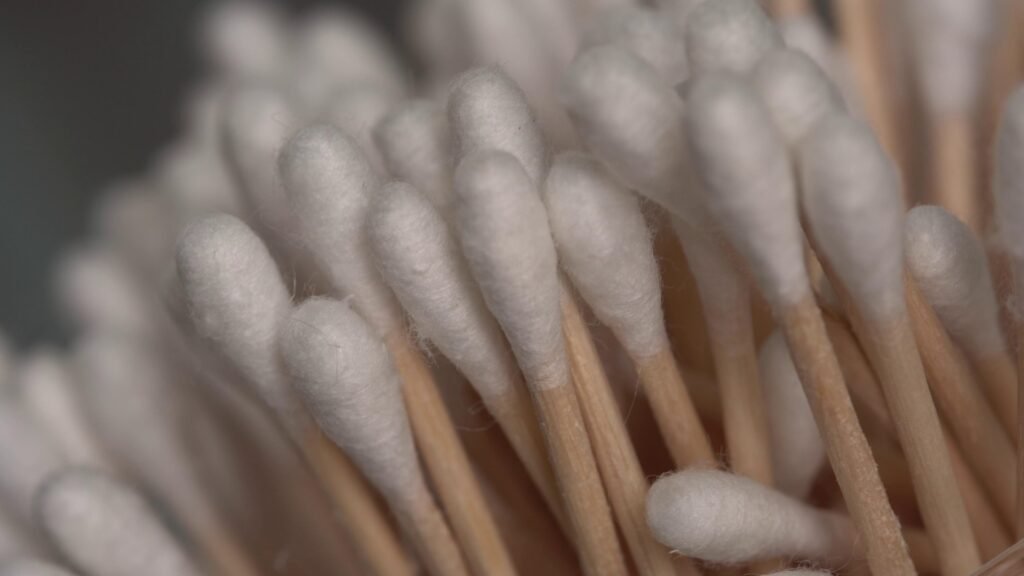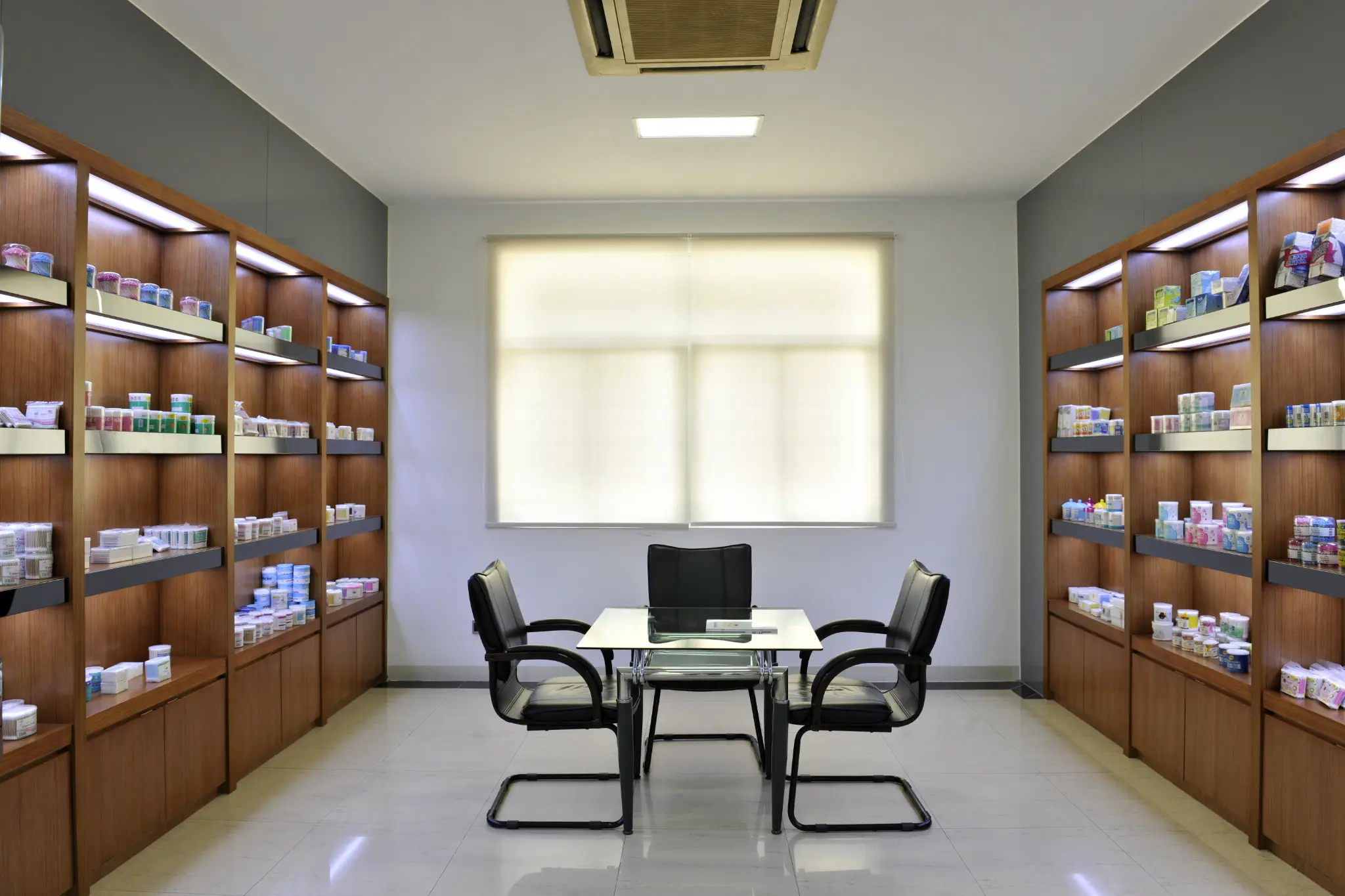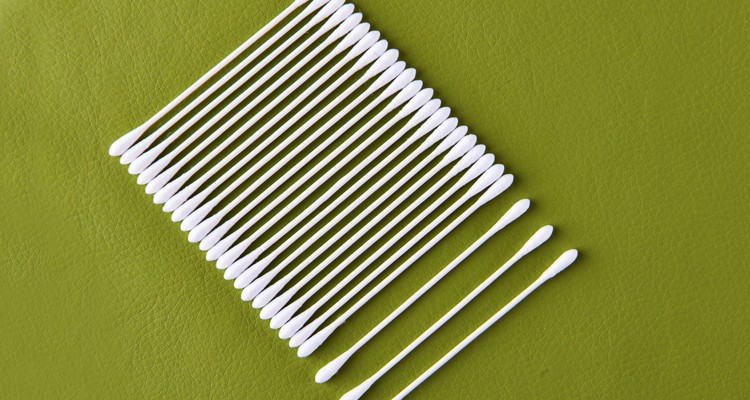
Global cotton swab demand and manufacturing trends, highlighting key production hubs and market growth.
Introduction: Global Demand for Cotton Swabs and Manufacturing Trends
Have you ever wondered where your cotton swabs come from? It’s a simple question, but the answer reveals a complex global network of manufacturing, trade, and innovation. From the humble beginnings of a single inventor to a multi-billion dollar industry, the journey of the cotton swab is a fascinating story of modern manufacturing.
In today’s interconnected world, understanding the origins of everyday products is more important than ever. Consumers and businesses alike are increasingly concerned with supply chain transparency, product quality, and ethical sourcing. For B2B buyers, knowing where cotton swabs are manufactured is crucial for making informed purchasing decisions, managing supply chain risks, and ensuring product quality.
This article provides a comprehensive overview of the global cotton swab manufacturing landscape. We’ll explore the top production countries, delve into the advantages of manufacturing in China, and take you inside SwabMasters‘ state-of-the-art factory. Whether you’re a procurement specialist, a brand owner, or simply a curious consumer, this guide will provide you with the insights you need to navigate the world of cotton swab manufacturing.
Quick Answer: Where Are Cotton Swabs Manufactured?
- Top Manufacturing Countries: China, India, Vietnam, and the USA are the leading manufacturers of cotton swabs globally.
- China’s Dominance: China is the largest producer and exporter of cotton swabs, offering significant cost advantages and manufacturing scale.
- Emerging Players: Countries like Brazil and Mexico are also becoming significant players in the cotton swab market.
- Quality and Compliance: Reputable manufacturers adhere to international standards like ISO, CE, and FDA to ensure product safety and quality.
Top Cotton Swab Manufacturing Countries
The global cotton swab market is dominated by a few key players, with Asia, particularly China, at the forefront of production. Let’s take a closer look at the top cotton swab manufacturing countries and what makes them leaders in the industry.
China

A modern Chinese cotton swab manufacturing facility, showcasing advanced automation and quality control.
China is the undisputed leader in cotton swab manufacturing, accounting for a significant portion of global production and exports. The country’s manufacturing prowess is driven by several factors:
- Economies of Scale: China’s massive manufacturing infrastructure allows for large-scale production, resulting in lower unit costs.
- Advanced Technology: Chinese manufacturers have invested heavily in automated production lines and advanced quality control systems, ensuring consistent quality and high output.
- Integrated Supply Chain: Many Chinese companies have vertically integrated operations, controlling the entire process from raw material sourcing to final packaging. This integration provides greater control over quality and costs.
- Skilled Workforce: China has a large and skilled workforce with extensive experience in manufacturing and quality control.
India
India is another major player in the cotton swab industry, leveraging its position as one of the world’s largest cotton producers. The country offers several advantages:
- Raw Material Access: Direct access to high-quality cotton reduces supply chain costs and ensures a steady supply of raw materials.
- Cost-Effective Production: Competitive labor costs and efficient manufacturing processes make India an attractive location for cotton swab production.
- Growing Export Market: India is a significant exporter of cotton swabs, serving markets in Asia, Africa, and the West.
Vietnam
Vietnam has emerged as a key player in the global cotton swab market, with a rapidly growing manufacturing sector. The country’s advantages include:
- Strategic Location: Vietnam’s proximity to major shipping lanes and its location in the heart of Southeast Asia make it an ideal hub for export-oriented manufacturing.
- Favorable Trade Agreements: Vietnam has signed numerous free trade agreements, providing preferential access to key markets.
- Young and Dynamic Workforce: Vietnam has a young and energetic workforce, eager to learn and adapt to new technologies.
USA
The United States has a long history of cotton swab manufacturing, with a focus on high-quality, specialized products. While the US may not compete with China on price, it excels in:
- Quality and Safety: US manufacturers are subject to strict FDA regulations, ensuring the highest standards of quality and safety.
- Innovation: The US is a leader in developing innovative and specialized cotton swabs for medical, cosmetic, and industrial applications.
- “Made in USA” Brand: For many consumers, the “Made in USA” label is a symbol of quality and trust.
Others
Other countries, such as Brazil, Mexico, and Turkey, are also emerging as important players in the global cotton swab market. These countries offer a combination of cost advantages, access to raw materials, and growing domestic markets.
Advantages of Manufacturing in China
For businesses looking to source high-quality cotton swabs at a competitive price, China offers a compelling value proposition. The country’s dominance in the industry is built on a foundation of several key advantages:
- Cost Efficiency: China’s lower labor costs, combined with its economies of scale, result in significantly lower production costs compared to Western countries.
- Speed and Flexibility: Chinese manufacturers are known for their ability to quickly scale production up or down to meet changing market demands. They are also highly flexible and can accommodate custom orders and private labeling.
- Comprehensive Supply Chain: China has a well-developed and integrated supply chain, with easy access to raw materials, components, and packaging.
- Government Support: The Chinese government has actively supported the manufacturing sector through various policies and incentives, creating a favorable business environment.
Compliance & Certifications (e.g., ISO, CE, FDA)

A display of key quality certifications, including ISO, FDA, and CE, ensuring product safety and compliance.
In the global marketplace, quality and safety are paramount. Reputable cotton swab manufacturers adhere to a range of international standards and certifications to ensure their products meet the highest quality and safety requirements. These certifications provide assurance to buyers that the products they are sourcing are safe, reliable, and manufactured in a responsible manner.
Here are some of the most important certifications to look for when sourcing cotton swabs:
- ISO 9001: This is the international standard for quality management systems. It demonstrates a manufacturer’s commitment to quality and continuous improvement.
- ISO 13485: This standard is specific to medical devices and demonstrates that a manufacturer has a quality management system in place that meets the requirements of the medical device industry.
- CE Marking: This is a mandatory conformity marking for products sold within the European Economic Area (EEA). It indicates that a product meets the EU’s safety, health, and environmental protection requirements.
- FDA Registration: For cotton swabs sold in the United States, manufacturers must register with the Food and Drug Administration (FDA). This ensures that the products meet the FDA’s safety and quality standards.
Inside SwabMasters’ Factory: Our Capabilities

A glimpse inside SwabMasters’ factory, where cutting-edge technology and rigorous quality control come together.
At SwabMasters, we combine the cost advantages of manufacturing in China with strict quality standards. Our factory features:
- Vertically Integrated Production: Complete control from raw cotton to final packaging
- High-Speed Automation: Up to 3,000 cotton swabs per minute production capacity
- Multiple Certifications: ISO 9001, ISO 13485, CE, and FDA compliant
- Custom Solutions: Various stick materials, cotton types, and packaging options
Take a virtual tour of our factory or request a sample from SwabMasters today.
Global Cotton Swab Market Statistics and Trends
Understanding the global cotton swab market requires looking at the numbers behind the industry. The cotton swab market has experienced steady growth over the past decade, driven by increasing hygiene awareness, expanding healthcare sectors, and growing cosmetic applications.
Market Size and Growth
The global swab market was valued at USD 3.48 billion in 2024 and is expected to reach USD 5.75 billion by 2032, growing at a compound annual growth rate (CAGR) of 6.48% from 2025 to 2032. This growth is particularly pronounced in the Asia-Pacific region, which accounts for 42% of global cotton swab consumption.
Regional Market Distribution
The geographical distribution of cotton swab manufacturing and consumption reveals interesting patterns:
| Region | Market Share | Key Countries | Manufacturing Focus |
|---|---|---|---|
| Asia-Pacific | 42% | China, India, Vietnam | Mass production, cost efficiency |
| North America | 25% | USA, Canada | Premium products, medical applications |
| Europe | 20% | Germany, UK, France | Quality standards, eco-friendly products |
| Latin America | 8% | Brazil, Mexico | Regional markets, emerging production |
| Middle East & Africa | 5% | Nigeria, South Africa | Growing domestic demand |
Manufacturing Volume by Country
Based on recent trade data, here’s how the top cotton swab manufacturing countries compare:
| Country | Global Market Share | Annual Production (Billions) | Export Volume | Key Advantages |
|---|---|---|---|---|
| China | 43% | 15-20 billion units | 6,098 shipments | Cost, scale, technology |
| Vietnam | 25% | 8-10 billion units | 2,838 shipments | Strategic location, trade agreements |
| India | 15% | 5-7 billion units | 1,500+ shipments | Raw material access, cost efficiency |
| USA | 8% | 2-3 billion units | 800+ shipments | Quality, innovation, FDA compliance |
| Others | 9% | 3-4 billion units | 1,000+ shipments | Regional specialization |
Cost and Lead Time Comparison by Country
For businesses evaluating cotton swab suppliers, understanding the cost and lead time implications of different manufacturing locations is crucial. Here’s a comprehensive comparison:
Cost Analysis
| Manufacturing Country | Unit Cost Range (USD) | Labor Cost Index | Raw Material Cost | Total Cost Advantage |
|---|---|---|---|---|
| China | $0.008 – $0.015 | 100 (baseline) | Low | Highest |
| India | $0.010 – $0.018 | 85 | Very Low | High |
| Vietnam | $0.012 – $0.020 | 90 | Medium | Medium-High |
| USA | $0.025 – $0.045 | 300 | High | Lowest |
| Mexico | $0.015 – $0.025 | 120 | Medium | Medium |
Lead Time Comparison
| Country | Standard Lead Time | Rush Order Capability | Shipping to US | Shipping to Europe |
|---|---|---|---|---|
| China | 15-25 days | 7-10 days | 20-30 days | 25-35 days |
| India | 20-30 days | 10-15 days | 25-35 days | 20-30 days |
| Vietnam | 18-28 days | 8-12 days | 22-32 days | 28-38 days |
| USA | 5-15 days | 3-7 days | 3-7 days | 10-15 days |
| Mexico | 10-20 days | 5-10 days | 5-10 days | 15-25 days |
Quality Standards and Manufacturing Processes
The quality of cotton swabs varies significantly depending on the manufacturing location and the standards employed by individual manufacturers. Understanding these differences is crucial for making informed sourcing decisions.
Manufacturing Process Standards
Automated vs. Semi-Automated Production:
- China: 85% automated production lines with advanced quality control systems
- India: 70% automated, with increasing investment in modern equipment
- Vietnam: 75% automated, rapidly modernizing facilities
- USA: 90% automated, with emphasis on precision and consistency
Quality Control Measures:
Modern cotton swab manufacturers implement multiple quality checkpoints throughout the production process. These typically include:
- Raw Material Inspection: Testing cotton fiber quality, purity, and consistency
- Production Line Monitoring: Real-time quality checks during manufacturing
- Final Product Testing: Comprehensive testing for absorbency, durability, and safety
- Packaging Quality Control: Ensuring sterile packaging and proper labeling
Environmental and Sustainability Considerations
As environmental consciousness grows, cotton swab manufacturers are increasingly focusing on sustainable practices:
Eco-Friendly Materials:
- Bamboo sticks: Biodegradable alternative to plastic sticks
- Paper sticks: Recyclable and compostable options
- Organic cotton: Pesticide-free cotton for sensitive applications
Manufacturing Sustainability:
- Energy efficiency: Modern facilities use renewable energy sources
- Waste reduction: Implementing circular economy principles
- Water conservation: Advanced water recycling systems in production
Choosing the Right Cotton Swab Manufacturer
When selecting a cotton swab manufacturer, several factors should guide your decision:
Key Selection Criteria
1. Quality Certifications
Look for manufacturers with relevant certifications such as ISO 9001, ISO 13485 (for medical applications), FDA registration, and CE marking for European markets.
2. Production Capacity
Ensure the manufacturer can meet your volume requirements consistently. Consider both current needs and future growth projections.
3. Customization Capabilities
Evaluate the manufacturer’s ability to provide custom solutions, including different stick materials, cotton types, packaging options, and private labeling.
4. Supply Chain Reliability
Assess the manufacturer’s supply chain stability, including raw material sourcing, backup suppliers, and risk management procedures.
5. Communication and Service
Consider the manufacturer’s responsiveness, English proficiency, and willingness to provide ongoing support.
Red Flags to Avoid
- Manufacturers without proper certifications
- Extremely low prices that seem too good to be true
- Poor communication or delayed responses
- Lack of quality control documentation
- No facility inspection capabilities
Conclusion: The Future of Cotton Swab Manufacturing
The global cotton swab manufacturing landscape is dynamic and evolving. While China remains the dominant cotton swab manufacturer, offering unmatched cost efficiency and production scale, other countries like India, Vietnam, and the USA each bring unique advantages to the table.
For businesses seeking cotton swab suppliers, the key is finding the right balance between cost, quality, and reliability. Whether you prioritize the cost advantages of Asian manufacturing or the quality assurance of Western production, understanding where cotton buds are made and the capabilities of different cotton swab production countries is essential for making informed decisions.
The industry continues to evolve with increasing focus on sustainability, automation, and quality standards. Cotton swab factories worldwide are investing in advanced technology and eco-friendly practices to meet growing consumer demands for responsible manufacturing.
As we look to the future, the cotton swab industry will likely see continued growth, driven by expanding healthcare markets, increasing hygiene awareness, and innovative applications. For businesses in this space, partnering with the right manufacturer – one that combines competitive pricing with reliable quality and sustainable practices – will be crucial for long-term success.
Key Takeaways for Cotton Swab Buyers
- China leads in volume and cost efficiency but evaluate quality standards carefully
- India offers raw material advantages and competitive pricing
- Vietnam provides strategic location benefits for Asian market access
- USA excels in quality and compliance for premium applications
- Certifications matter – look for ISO, FDA, and CE compliance
- Sustainability is increasingly important – consider eco-friendly options
Ready to find your ideal cotton swab manufacturing partner? Contact SwabMasters today to discuss your specific requirements and discover how our advanced manufacturing capabilities can meet your needs.


